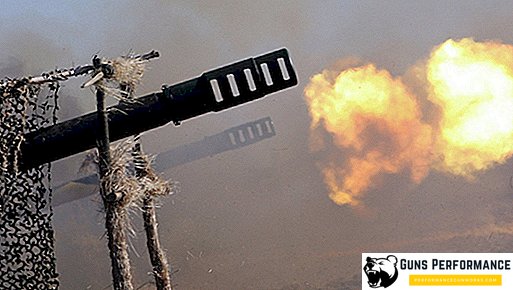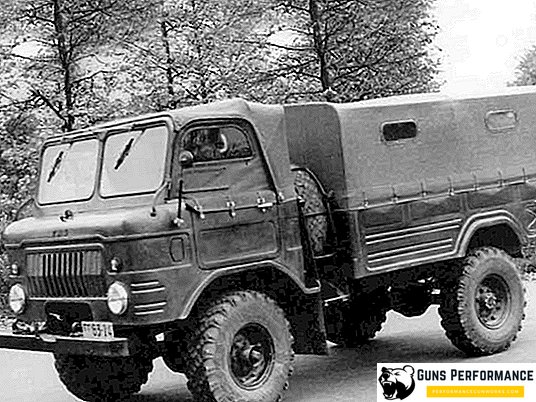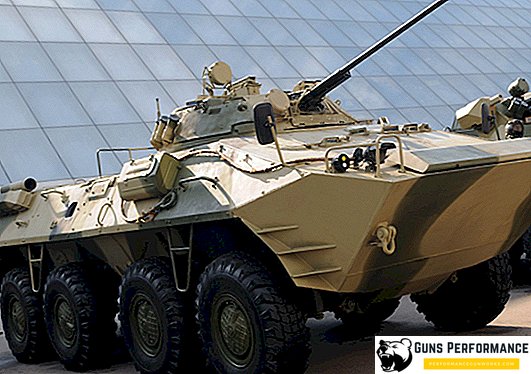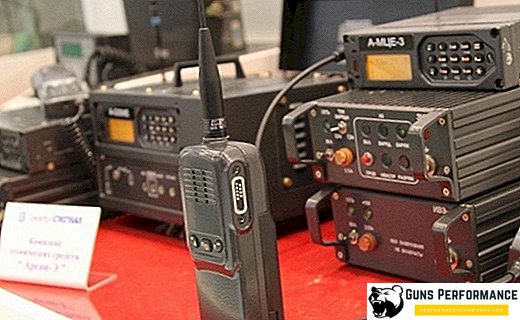Boeing 787 Dreamliner ("Dreamliner" - the dream liner) is a jet passenger aircraft, created by the same company. Commercial operation of the liner began in 2011.
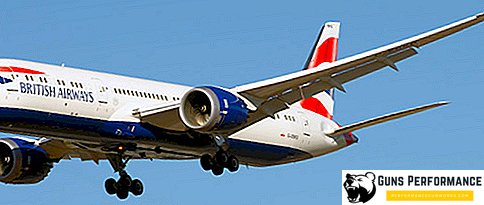
The layout of the cabin and the location of the best places
The passenger cabin of the Boeing 787 is able to accommodate in itself from 210 to 330 people (with a two-class layout, depending on the version).
In the two-class layout of the Boeing 787 business-class seats are located in front of the passenger compartment. As shown in the cabin layout, the business class takes places with row numbers from 1 to 6. Usually this class has two fairly wide aisles, and the seats are placed according to the “2-2-2” scheme. Thus, a business class cabin can accommodate up to 36 passengers.
Business class seats are the best in the Boeing 787. They are equipped with soft and comfortable chairs that can fold almost 180 degrees, thus turning into cozy beds. In general, the places here have the form of semi-cubicles placed by the “Christmas tree” for greater convenience of passengers. Each seat in the business class has a monitor and an extensive multimedia entertainment system that can brighten up a good flight for several hours. Business class passengers are also provided with comfortable, soft and warm socks, and during night flights - pajamas sets. Another interesting feature of this class is that there are no curtains on the windows. Shading is done using the buttons that change the transparency of the polarized glass from which the windows are made. The menu for business class passengers has a wide selection of both dishes and drinks. However, it is worth considering that some dishes may not be for everyone. For example, Asian airlines often offer spicy dishes.
And although the business class seats are the best on the plane, you must know their specifics when booking tickets. The least convenient for long flights are business class seats, located in row 3 (according to the scheme). Their inconvenience is due primarily to their unfortunate location near the toilet facilities. This means that passengers will constantly pass through here, and sometimes queues may be collected. And although the toilets in business class are equipped with a low-noise drain, but the sound of opening-closing doors and the constantly burning lights here can significantly affect the quality of rest, especially at night. For the same reason, the places located in the first row and marked with letters A, B, K and L and located directly opposite the toilet and utility rooms are rather inconvenient for the business class.
Another not very successful option when booking tickets are places located in the sixth row. These places are located close to the partition separating the business class cabin from the economy class. This means that the sounds from a noisy economy class will be heard to the passengers of these places, and, therefore, with a quiet rest there can be serious problems. Therefore, people who want to relax and unwind during the flight are recommended seats 2 and 5 rows.

Behind the seats of business class is an economy class lounge. Economy class has two passes, and the seats are located according to the scheme "3-3-3". Its seats are represented by soft armchairs with backs, capable of reclining at an angle sufficient for comfortable rest and sleep. The distance between the seats in the economy class, of course, is not as large as in the business class, but, nevertheless, meets international standards and allows you to safely stretch your legs, even for people with high growth. Also the places of this class are equipped with a complex of audio / video entertainment, as well as comfortable monitors, which are located, as a rule, in the backs of the chairs opposite. The menu in the economy class Boeing 787 Dreamliner is quite extensive and tasty.
The most successful in economy class are places located in rows with numbers 16 and 27. Their convenience is ensured by the absence of chairs in front of them, and therefore there is more than enough legroom. More advantageous in terms of food are the places of the 16th row - in fact it is from them that the spacing of food begins, and, therefore, here the choice of dishes and drinks will be the widest. A feature of the seats 16 and 27 rows is also the fact that for them screens, like folding tables for eating, are built into the armrests, which can cause inconvenience. Another important detail is that there are usually places for passengers with children, and, therefore, these places are not recommended for people who want to relax in flight or can not tolerate fuss.

Less successful dreams for an economy class liner Boeing 787 are the places located in row 25. The fact that they are right next to the toilet rooms, makes them not very comfortable for rest and restful sleep, because there will often be queues of passengers. With not too wide aisles of the passenger compartment, this will create certain inconveniences for passengers of the places designated by the letters C, D, F and J located in this row. For the same reason, the 37 rows of the economy class cabin will be just as uncomfortable. But the most unfortunate are the places located in the last, or 38, row of aircraft, and not only because of their proximity to the toilet and utility rooms. The overview for these places is seriously limited by partitions, which can cause serious problems for people who do not tolerate rolling. Therefore, when booking seats should take into account these features.
History of the Boeing 787
In the late 1990s, it became apparent that the Boeing 767 aircraft, which had been very popular since the early 80s, began to become obsolete. This fact more and more began to push Airbus to the first positions. In view of this, the Boeing company decided to create a new aircraft that was supposed to be more economical than all its predecessors and competitors, and the emphasis was on high speed (which should be close to sound). It was due to the shorter flights and it was planned to achieve savings in the operation of the liner. The new model is called the Boeing Sonic Cruiser.
However, the increase in oil prices and the ambiguous attitude of potential customers to the announced model forced Boeing to close the project. Instead, the development of a new airliner began, which was to replace the outdated Boeing 767 and become more economical to operate, which should have attracted new customers. In the spring of 2004, the company announced a new project, which had the symbol 7E7, in which, by the way, a number of solutions from the Boeing Sonic Cruiser project were used.
In January 2005, the project was announced under the name Boeing 787 Dreamliner (“Dream Liner”). It was also noted that the aircraft will be 20% more economical to use compared to the previous liners of the company, as well as be a serious competition for Airbus aircraft.
After completing the construction of the first prototype aircraft, in December 2009, the Boeing 787 made its first flight. Tests of the aircraft were successful, and in the summer of 2011 the Boeing 787-8 (base model) set off for its first test flight across the Pacific Ocean: from Seattle to Tokyo, which, by the way, ended successfully. Aircraft tests in Japan were conducted in close cooperation with the Japanese airline All Nippon Airways.
At the end of August 2011, the Boeing 787 was certified, and two months later its commercial operation began.

However, the first two years of using the aircraft are characterized by a relatively large number of accidents, which is why in 2013 the flights of the aircraft were temporarily suspended. After the necessary checks, the operation of the Boeing 787 continued in April of the same year.
Modifications of the Boeing 787-800, 900, 1000
To date, the Boeing 787 liner has 3 existing modifications.
- Boeing 787-8 - is a basic modification of the aircraft. Initially, this model was positioned as a replacement for the outdated Boeing 767, as well as a more economical competitor to Airbus aircraft. Able to carry from 210 (with a two-class layout) to 250 passengers (with a single-class layout of the passenger compartment). Commercial operation began in 2011.
- Boeing 787-9 - modification of the Boeing, which has a greater passenger capacity (from 250 to 290 people, depending on the layout of the cabin) and increased tonnage. These characteristics were achieved by increasing the length of the aircraft fuselage by 6 and a half meters. Also, the flight range was increased (by 500 kilometers). Commercial operation of the liner began in 2014.
- The Boeing 787-10 is a modification of the liner with an even greater passenger capacity (330 people with a two-class passenger cabin layout), extended by another 5 meters (compared to the Boeing 787-9). It is assumed that this model will replace the Boeing 777 liner. The first deliveries of the aircraft are expected in 2018-2019.
You should also mention the modification of the Boeing 787-3, which was originally planned as a base. This aircraft was to be operated on domestic flights in Japan, however, due to the fact that all orders for it were changed to the Boeing 787-8, the project was closed.

Overview and characteristics of the liner
The Boeing 787 Dreamliner is a wide-body jet airliner. Aerodynamically, the aircraft is a low-wing aircraft with a normal single-fin design. A feature of this liner is that in its production are widely used composite materials. Thus, the aircraft fuselage, wing and flaps consist of a 50% carbon-based composite, which provides for greater body strength and lightness.
The on-board electronics system provides pilots with all the necessary information. Thus, the data is displayed on special displays indicating all the data necessary for the flight: terrain maps, approach procedures, etc. Also, avionics sends data about the state of the aircraft and its nodes to ground services, thereby allowing diagnostics to be carried out before the immediate repair of the Boeing 787 and to monitor its condition in real time.
Also in the design of the liner was used a number of original design solutions aimed at reducing the noise level in the cabin of the Boeing. One of them was the special design of the nacelles in which the engines are located. The rear part of the gondola has a toothed section, which makes it possible to seriously reduce engine noise by mixing a jet stream with air.
The climate control system in the ship also uses a new concept. Now the air for the cabin is taken directly from the outside and is subjected to pre-treatment.

Flight characteristics of the Boeing 787 and its main modifications:
| Boeing 787-8 | Boeing 787-9 | Boeing 787-10 | |
| Crew | Two pilots | ||
| Passenger capacity | 210 (2 classes) | 250 (2 classes) | 330 (2 classes) |
| 250 (grade 1) | 290 (grade 1) | ||
| Length m | 56,7 | 63 | 68,3 |
| Wingspan, m | 60,2 | ||
| Wing area, m2 | 325 | ||
| Wing sweep angle, ° | 32,2 | ||
| Height, m | 17 | ||
| Fuselage dimensions, m | Width: 5.8 | ||
| Height: 8 | |||
| Interior width, m | 5,5 | ||
| Cargo capacity | 138.2 m3 | 174.5 m3 | 192.6 m3 |
| 28 containers of type LD3 | 36 LD3 type containers | 40 LD3 type containers | |
| Maximum take-off weight, kg | 227 930 | 254 000 | |
| Maximum landing weight, kg | 172 000 | 193 000 | 202 000 |
| Maximum weight without fuel, kg | 161 000 | 181 000 | 193 000 |
| Empty weight, kg | 118,000 kg | 126,000 kg | N / A |
| Cruising speed | 0.85 M (902 km / h) | ||
| Max speed | 0.90 M (956 km / h) | ||
| Flight range, km | 13 620 | 14 140 | 11 910 |
| Runway length, m | 3 100 | 2 900 | N / A |
| With modernization: | |||
| 2 600 | |||
| Fuel reserve, l | 126 000 | N / A | |
| Ceiling, m | 13 100 | ||
| Engines | 2 x General Electric GEnx-1B or 2 x Rolls-Royce Trent 1000 | ||
| Engine thrust | 280 kN | 320 kN | 340 kN |
Conclusion
Boeing 787 Dreamliner is the newest aircraft developed by Boeing. A number of successful modifications of this passenger liner indicates that it has great design potential, and the growing number of orders for the aircraft allows us to conclude that this car has a promising future in the global airline market.


